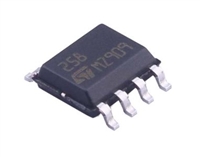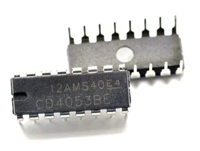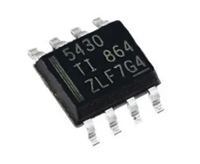3.0 Functional Description (Continued)
mains high, transmit data (TXD) is encoded out to the trans-
carrier sense (CRS) is asserted. Receive data (RXD) and
receive clock (RXC) become available typically within 6 bit
times. At this point the digital phase-locked loop has locked
to the incoming signal. The DP8391A decodes a data frame
g
mit-driver pair (TX ). The transmit enable and transmit data
inputs must meet the setup and hold time requirements with
respect to the rising edge of transmit clock. Transmission
ends with the transmit enable input going low. The last tran-
sition is always positive at the transmit output pair. It will
occur at the center of the bit cell if the last bit is one, or at
the boundary of the bit cell if the last bit is zero.
g
with up to 18 ns of jitter correctly.
The decoder detects the end of a frame when the normal
mid-bit transition on the differential input ceases. Within one
and a half bit times after the last bit, carrier sense is de-as-
serted. Receive clock stays active for five more bit times
before it goes low and remains low until the next frame.
Figures 7, 8 and 9 illustrate the receive timing.
The differential line driver provides ECL like signals to the
transceiver with typically 5 ns rise and fall times. It can drive
up to 50 meters of twisted pair AUI Ethernet transceiver
cable. These outputs are source followers which need ex-
ternal 270X pulldown resistors to ground. Two different
modes, full-step or half-step, can be selected with SEL in-
3.4 COLLISION TRANSLATOR
The Ethernet transceiver detects collisions on the coax ca-
ble and generates a 10 MHz signal on the transceiver cable.
The SNI’s collision translator asserts the collision detect
output (COL) to the DP8390 controller when a 10 MHz sig-
nal is present at the collision inputs. The controller uses this
signal to back off transmission and recycle itself. The colli-
sion detect output is de-asserted within 350 ns after the 10
MHz input signal disappears.
a
in the idle state. With SEL high, transmit
put. With SEL low, transmit
is positive with respect to
b
b
a
and
are equal in the idle state, providing zero differ-
transmit
transmit
ential voltage to operate with transformer coupled loads.
Figures 4, 5 and 6 illustrate the transmit timing.
3.3 MANCHESTER DECODER
The decoder consists of a differential input circuitry and a
digital phase-locked loop to separate Manchester encoded
data stream into clock signals and NRZ data. The differen-
tial input should be externally terminated if the standard
78X transceiver drop cable is used. Two 39X resistors con-
nected in series and one optional common mode bypass
capacitor would accomplish this. A squelch circuit at the
input rejects signals with pulse widths less than 5 ns (nega-
a
b
The collision differential inputs ( and ) should be termi-
nated in exactly the same way as the receive inputs. The
collision input also has a squelch circuit that rejects signals
with pulse widths less than 5 ns (negative going), or with
b
levels less than 175 mV. Figure 10 illustrates the collision
timing.
3.5 LOOPBACK FUNCTIONS
b
tive going), or with levels less than 175 mV. Signals more
negative than 300 mV and with a duration greater than
Logic high at loopback input (LBK) causes the SNI to route
serial data from the transmit data input, through its encoder,
returning it through the phase-locked-loop decoder to re-
ceive data output. In loopback mode, the transmit driver is in
idle state and the receive and collision input circuitries are
disabled.
b
30 ns are always decoded. This prevents noise at the input
from falsely triggering the decoder in the absence of a valid
signal. Once the input exceeds the squelch requirements,
4.0 Connection Diagram
Top View
*Refer to the Oscillator section
TL/F/9357–4
FIGURE 3a
Order Number DP8391AN
See NS Package Number N24C
3






 MAX6675资料手册参数详解、引脚配置说明
MAX6675资料手册参数详解、引脚配置说明

 LM258引脚图及功能介绍、主要参数分析
LM258引脚图及功能介绍、主要参数分析

 CD4052资料手册参数详解、引脚配置说明
CD4052资料手册参数详解、引脚配置说明

 一文带你了解TPS5430资料手册分析:参数介绍、引脚配置说明
一文带你了解TPS5430资料手册分析:参数介绍、引脚配置说明
